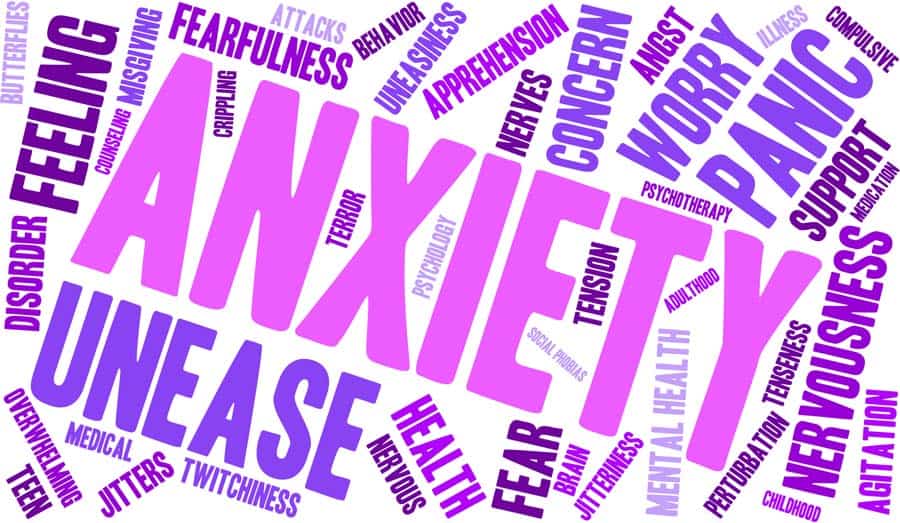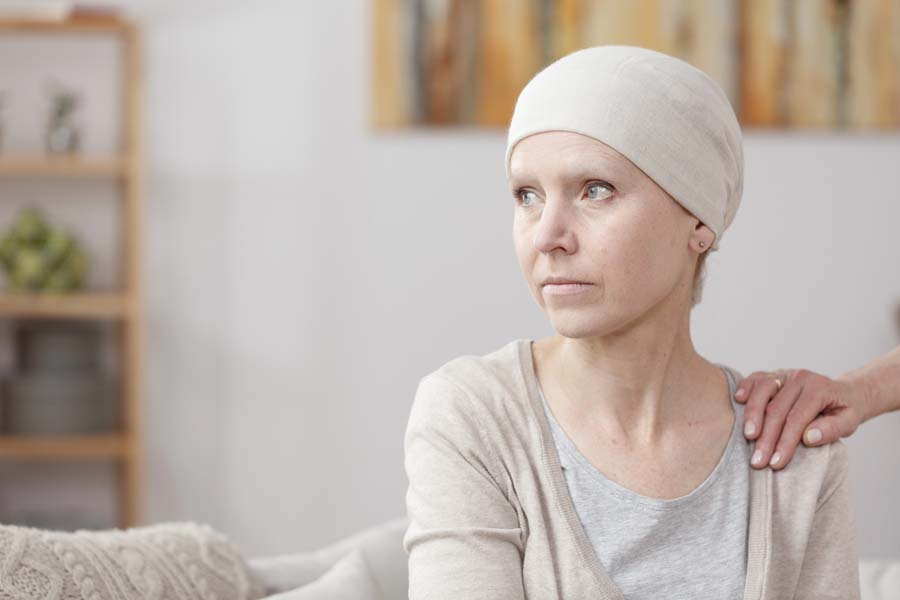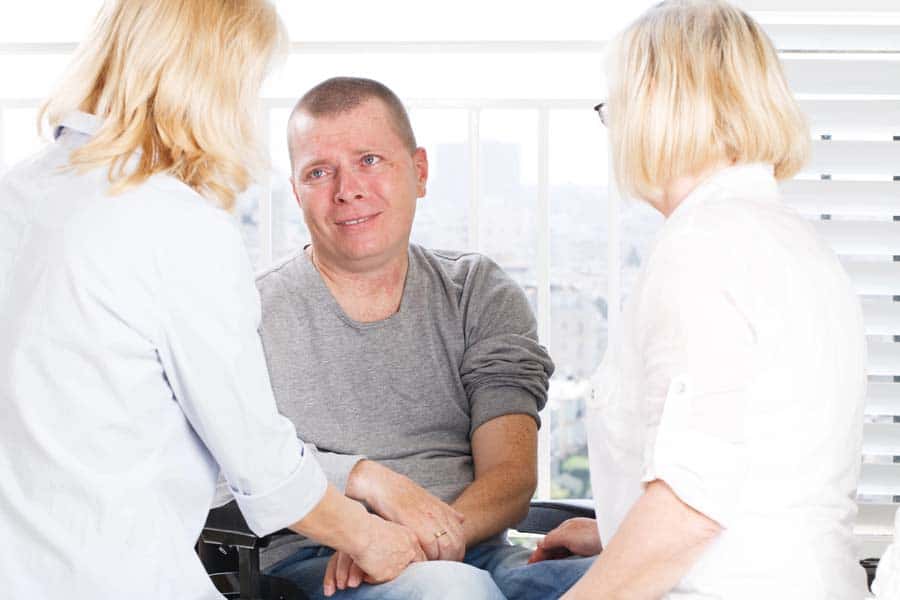Please view our updated COVID-19 guidelines and visiting procedures →.

Anxiety is a common and normal response to terminal illness in hospice patients. Symptoms of anxiety, listed below, may be related to physical, psychological, social, spiritual, practical, and issues of loss that are prevalent at the end-of-life.
Although many hospice patients will experience fear and other manifestations of anxiety, a formal anxiety disorder, manifested by intense, excessive, and persistent worry and fear about everyday situations, is not common. Some patients, however, may experience severe anxiety related to serious illness; others may even express a desire to hasten dying as a means of avoiding anxiety.
Anxiety is estimated to affect 70% of patients at the end of life and is more common among women, physically impaired patients, and younger patients. Severe anxiety is less common, affecting less than 10% of patients.


Although patients with serious illness commonly experience anxiety, they may not express these feelings, making it important for caregivers to listen for key words that can be a sign of underlying anxiety. Commonly, these words include “worried,” “scared,” “nervous,” and “concerned.”
Clinicians may also screen patients more formally for anxiety (and depression), using validated scales such as the brief Patient Health Questionnaire for Depression and Anxiety (PHQ-4) and the General Anxiety Disorder scale (GAD-7). Patients testing positive may need to be more formally assessed for major depression requiring pharmacologic treatment and monitoring over time for response.
Anxiety may also be due to an unmanaged underlying symptom, especially in patients without a personal or family history of anxiety, and those who do not respond to medications commonly used for its relief (reviewed below). Patients with shortness of breath, for example, can experience severe anxiety, which is relieved with the appropriate use of opioids.
In addition to depression, symptoms of anxiety may overlap with delirium, making careful assessment for this condition important. Patients with delirium, for example, can show poor sleep and inattention or difficulty focusing, which may also be seen in anxiety. Unlike people with anxiety, however, delirious patients typically also have disordered thought (such as hallucinations and delusions), disturbed consciousness (excessive lethargy, hyper-alertness, or both), and altered cognition – which are rarely seen in anxiety.
Once anxiety is identified, treatment begins with sitting with an anxious patient and exploring his or her concerns. Support may be needed from a variety of health professionals:

In patients with anxiety and depression – or those whose anxiety is a manifestation of depression – antidepressant therapy may provide some relief. These include SSRIs such as escitalopram (Lexapro ©) and other agents. Because antidepressants typically require several weeks to take effect, prognosis is relevant to the decision to initiate therapy.
Benzodiazepines such as lorazepam (Ativan ©), clonazepam (Klonopin ©), alprazolam (Xanax ©), and diazepam (Valium ©), are commonly used for the rapid relief of anxiety in hospice patients and can be very effective. The choice of which to use is driven by variations in potency, duration of action, and the presence of active metabolites.
The effects of these drugs can vary greatly between individuals. Lorazepam may also paradoxically increase anxiety or cause agitation and delirium, requiring a switch to another agent.
In summary, anxiety is common in hospice patients. Fortunately, hospice staff are skilled at helping relieve anxiety, using a variety of techniques from counseling to behavioral and lifestyle interventions, to the use of medications. If your hospice-enrolled loved one is – or may be – suffering from anxiety, be sure to notify your hospice team so they can help.

As a not-for-profit, we depend on generous donors to help us provide customized services and therapies that aren’t completely covered by Medicaid, Medicare, or private insurance.
Please make a gift to help us sustain the highest standard of care.
Admissions may be scheduled seven days a week.
Call our Centralized Intake Department: (203) 315-7540.